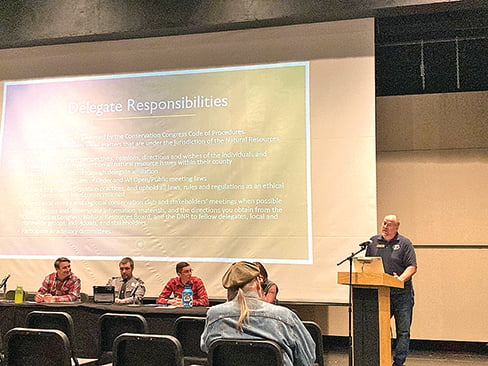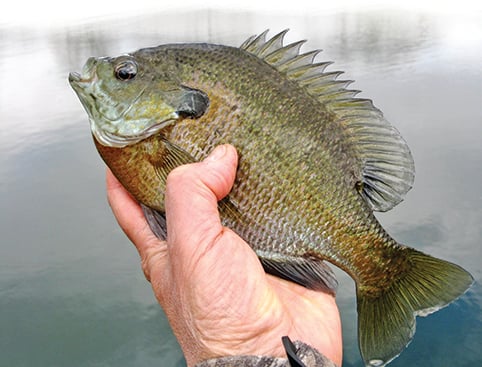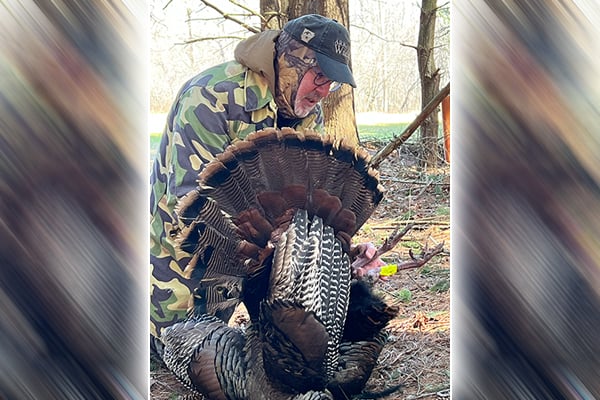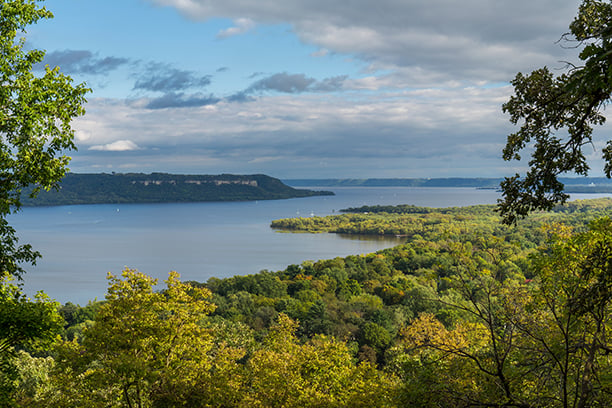A quick chat with big-game hunter Craig Boddington – Outdoor News
Craig Boddington, 70, remains one of the best-known big game hunters in the world. He has written over 4,000 published magazine articles on hunting and firearms and has authored 28 books. His writing frequently includes technical firearms subjects and evaluation of firearms, optics, and ammunition.
Originally from the Jayhawk State, he still owns a farm in the southern Kansas. He also owns a home along the central coast of California where he once served in the Marine Corps at Camp Pendleton. Boddington was at his Kansas farm for this interview, which is edited for length and clarity. You can listen to the full audio version of the interview below.
Q. You started outdoor writing while still in the Marines?
A. I was young and doing a little freelance writing, though not terribly successfully. I got off active duty in 1979 and was working in Los Angeles and met Bob Peterson and the folks at Peterson Publishing and they offered me a job and I went to work for them. And I’m still writing for the same magazines I was writing for 44 years ago.
Q. In what titles can folks see your content?
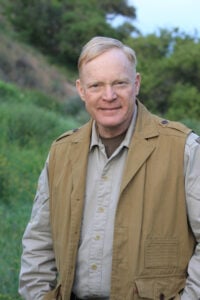
A. I mostly write for Peterson’s Hunting magazine, and Guns and Ammo, and Rifle Shooter. I also write for Sports Afield and the Safari magazine and a few others. And I’ve written a lot of books; I don’t even know how many are still in print. I still do some filming for Guns and Ammo TV. I’ve done a number of hunting TV shows, but the pandemic really shut down a lot of that, and for me that’s been a good thing.
Q. You’re an unapologetic big game hunter and there’s not many of those guys left. Trophy hunting is not necessarily for everyone, even among hunters. Why has it been for Craig Boddington?
A. I’ve always been driven to see different and new places. And I started this when I was young and I’ve been fortunate to make a career of it. Hunters are the ones who pay for wildlife management in this country through our license fees and through funding from the Pittman Robertson Act and we’ve been successful with our North American Model of Wildlife Conservation, but elsewhere and especially in Third World economies, they do it differently. Hunters pay the way.
Obviously it has to be selective and it has to be managed. But elsewhere in the world, without hunting, there would simply be no wildlife. Africa is a wonderful example. To us, lions and elephants and Cape buffalo and hippos and even crocodiles are beautiful and interesting animals that we want to see and photograph, but to the local Africans, these are dangerous menaces that are dangerous to their children. They eat their livestock.
The only countries in Africa where wildlife really still flourishes and persists are the hunting countries. There are about 50 sovereign nations on the African continent and about 20 have organized sport hunting and they’re really the only ones that have wildlife and viable numbers. Now most countries have parks and certainly there’s a place for protected enclaves. But other than the hunting countries and those parks, there’s very little wildlife remaining. So I believe in hunting and yes, it’s been an important part of my life.
RELATED CONTENT: Read many more “Quick chats” with some of the biggest names in hunting, fishing and conservation
Q. Growing up, did you read some of the classic writing about safari hunting? Like Hemingway’s Green Hills of Africa?
A. Absolutely. I grew up in Kansas City and going to Africa was a pretty weird thing in those days. Nobody did that but my mother’s only brother, my uncle, went on safari in 1956 in a collecting expedition for the Kansas City Museum of Natural History. And at the time I was 4 years old, but I remember so clearly saying I’m gonna do that someday and I never let go of that dream. I discovered Geeen Hills of Africa and Robert Ruark and Karamoja Bell and Jim Corbett the tiger hunter when I was in junior high. I started reading this stuff and I became obsessed and saving my pennies. I was 24 when I went to Africa for the first time to get it out of my system once and for all. That didn’t work too well.
Q. Are there any misconceptions about African hunting among the hunting public?
A. Absolutely there is. Even some hunters will look at you and say, “You can’t still hunt elephants, can you?” Well, yes, there are half a dozen countries where elephants are overpopulated and hunting is an important part of the management. I’ve done that and I have absolutely no desire to again, but I’ll defend it because it’s important and essential to management in those places.
Q. Among some of younger hunters there seems to be less emphasis on trophy hunting today. We hear more about hunting’s connection to “eat local” and the locavore thing. Do you perceive that, too, and does it leave a little hole in the heart of proud big game hunter like yourself?
A. I do perceive that, too. There is less interest in trophy hunting though the word trophy in itself is a greatly misused term. Unfortunately, people kind of equate that with going hunting and taking the horns or the skin or antlers and leaving the rest. And that’s simply not true and in so many places, it’s totally illegal.
I was just in Alaska where if you leave a scrap of meat in the field, that’s a violation. You have to bring it all out and that’s generally the case in most places. The meat is going to be absolutely utilized. That’s something about hunting in foreign countries that is totally misunderstood. We’ve talked about Africa but Asia is the same. In the numerous countries of Asia that are open to hunting, the foreign hunter is really important. He pays the license fees, he brings employment to the local people, and you bet that meat is going to be used. Usually when we’re finished, there’s barely a wet spot left on the ground. A village will congregate and take every scrap of meat, and they absolutely need it.
Q. We’ve seen a backlash among the general public to some hunters and huntresses on social media. Is that something you’ve dealt with?
A. It’s kind of part of the deal. We’ve seriously seen it with the women who hunt, and there are many women who have been attacked viciously. I get some heat now and again, and I’m careful about what I post. You have to understand people’s sensitivities. Again you get into the perceived difference between trophy hunting and subsistence hunting. It seems that as long as you’re sensible and tasteful, you can talk about deer hunting all day long because deer are understood to be a food animal.
What people don’t get is that iconic animals like elephants, giraffes, well in Africa, those are food animals, too. But if you if you post a photograph of hunting those kind of animals or the cats or even bears, you’re going to get some heat because people don’t understand it.
Q. What’s your perception of the state of outdoors writing. Is the storytelling era over? Or does the public still want some of that?
A. It depends on the publication, but things have changed tremendously and certainly the printed publications are not nearly as powerful as they were when I was young. There’s so much on the Internet. Younger people are reading less and relying less on the printed page. Magazines and newspapers are skinnier; there’s not as much ad content as there used to be, but it still works for me. But my career is nearly over, so it’s a concern for the younger writers coming up.
Q. Any tips for the next generation of big game hunters?
A. Well, yeah. I mean preparation and research are keys. Get in shape and spend a lot of time at the range. And understand that the wonderful thing about hunting is there are no guarantees.
You can control yourself and make sure that you have the right gear, but there are things you can’t control, like the weather and game movement, which can change from year to year. But that uncertainty is part of the charm of it to me: You have no idea what’s gonna happen.
I just got back from Alaska, had a wonderful time. I was hunting bear on the Alaskan Peninsula and probably have planned that hunt for five years. I spent the whole 14 days and we had absolutely awful weather most of the time – 50 mph winds and one period it rained straight for 48 hours. I didn’t get a bear. I saw a big bear three times, and made three different long, laborious stalks and I’m not as young as I once was; that walking in the muskeg is not as easy as it used to be. And I came home empty. And maybe I’ll have time to try again. Or maybe I won’t.
Q. People see the bylines but don’t understand the work behind it. Just shooting and probably testing new rounds has got to be a big part of your of your life. How much time do you do you estimate you spend testing equipment?
A. It’s a tremendous amount of time on the range because a lot of the writing I do is semi-technical evaluating firearms and cartridges and bullets and optics and the whole gamut. Proper bullets for this or that type of game, etc. Between my places in Kansas and in California, I think I own five different chronographs.
Q. You’re obviously a big centerfire guy but do you mess around with smoothbores and chase birds?
A. I grew up with that. Dad was a quail and pheasant hunter. He never even understood my passion for Africa. He never went with me, though I tried to talk him into it. He was a fighter pilot and World War II vet, and when he turned off the switch in 1945, he said would never again fly over blue water again and he never did. Now we had some great hunts together in Canada and in the West. I love shooting a shotgun. I’m not as good as I once was, but I actually put myself through college shooting trap.
Q. So the obligatory: Do you have a favorite species that you’ve hunted?
A. White-tailed deer because they’re so unpredictable and frustrating, and in the Kansas I grew up in, I was a bird hunter because we didn’t have any deer. Kansas deer were declared extinct in 1925, and we didn’t have a modern deer season till 1964. So I was a teenager when deer hunting resumed and, man, that was big stuff. An adventure. So white-tailed deer are my passion just like millions of other American hunters.
Q. Any remaining plans for autumn 2023 and this winter?
A. I’ve got an elk hunt in Colorado and then I’ll be back here in Kansas for our deer season. We’ve got a long and luxurious archery season here and the rut usually peaks right before Thanksgiving, and then our rifle season is always 12 days, starting the Wednesday after Thanksgiving. So that’s one of my big events. Beyond that, I don’t really have a lot of plans for next year. The bears in Alaska eluded me completely last week, but I’ll probably go back in the spring and try again before I get too old to handle that muskeg.
In the audio file below, you can listen to the complete, unedited interview with Boddington.
Source: https://www.outdoornews.com/2023/10/31/a-quick-chat-with-big-game-hunter-craig-boddington/



